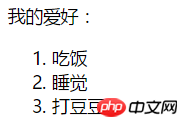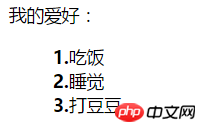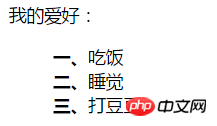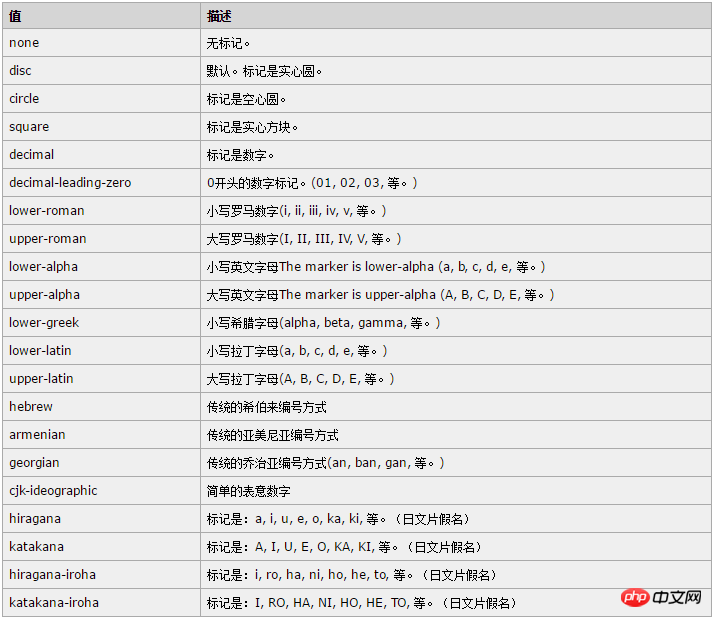
before and after are actually pseudo-elements attached to the front and back of the element. What it means to say it is a pseudo-element is that the element is not generated in the DOM, but is drawn when the browser rendering engine renders CSS. This article This article mainly introduces you to the usage of pseudo elements ::before and ::after in CSS3. Friends who need it can refer to it.
Preface
It is well known that the two pseudo-elements::before and ::after are actually the content in CSS3, but in fact in CSS2 There are already these two, but in CSS2 they are represented by a colon in front (:before and :after). Today I will mainly talk about how to use these two pseudo elements.
1. You can add styles to ordinary elements just like ordinary elements.
For example, if I want to add an icon in front of the text, if I use ordinary When writing elements, I can write like this:
/*CSS*/
.del{ font-size: 20px;}
.del i{ display: inline-block; width: 20px; height: 25px; margin-right: 2px; vertical-align: middle;
background: url("imgs/delete.png") no-repeat center; background-size: 100%;}
.del span{ vertical-align: middle;}/*HTML*/ <p class="del"><i></i><span>删除</span></p>
But it always feels uncomfortable to put an empty i tag, so just remove it. Bar!
/*CSS*/
.del{ font-size: 20px;}
.del::before{ content: ""; display: inline-block; width: 20px; height: 25px; margin-right: 2px; vertical-align: middle;
background: url("imgs/delete.png") no-repeat center; background-size: 100%;}
.del span{ vertical-align: middle;}/*HTML*/ <p class="del"><span>删除</span></p>
Here we directly use the ::before pseudo-element to replace the empty i tag. The two have the same effect:

Also taking advantage of this, we can use the ::after pseudo-element to solve the classic problem of clearing floats:
.clearfix::after{ display:block; clear: both; content: ""; overflow:hidden; height:0; }
Of course, if your website still needs to be compatible with IE8, then use :after, ::after is not compatible.
2. Insert text into elements
#Sometimes I may need to add the same text to many elements at the same time, then you can consider using These two pseudo elements. For example:
/*CSS*/
.up:after{ content: '↑'; color: #f00;}
.down:after{ content: '↓'; color: #0f0;}/*HTML*/ <p class="up">上升</p> <p class="down">下降</p>
The effect is as follows:

3. Insert images into elements
To achieve a picture plus text effect similar to the first example in this article, you can also use pseudo elements to directly insert pictures without using a background image , like this:
/*CSS*/
.del{ font-size: 20px;}
.del::before{ content: url("imgs/delete.png"); display: inline-block; margin-right: 2px; vertical-align: middle; }
.del span{ vertical-align: middle;}However, it is important to note that the image inserted in this way cannot change the size of the image by controlling the size of the pseudo element, only It can introduce fixed-size images (this is a bit tricky...), so I personally think it is better to use background images honestly.
4. Insert consecutive project numbers
Maybe you will say, isn’t it easy to add consecutive project numbers? Just use the ordered list directly!
Yes, it is indeed possible, just like this:
<p>我的爱好:</p>
<ol>
<li>吃饭</li>
<li>睡觉</li>
<li>打豆豆</li>
</ol>This is the effect under Chrome:

Looks good, no problem, what if I want to bold the previous serial number? I'm confused...
Now you say, can't I just manually add labels and numbers before each text, and then add styles to the labels?
/*CSS*/
ul li{ list-style: none;}
ul li span{ font-weight: bold;}/*HTML*/
<p>我的爱好:</p>
<ul>
<li><span>1.</span>吃饭</li>
<li><span>2.</span>睡觉</li>
<li><span>3.</span>打豆豆</li>
</ul>Yes, there are three items now. What if there are thirty items or three hundred items? Add them one by one? (Very silly and naive...)
If you use pure CSS at this time, you have to use pseudo elements:
/*CSS*/
ul li{ list-style: none; counter-increment: number;} //number相当于是个变量,随便取名就好,在伪元素中调用
ul li::before{ content: counter(number)"."; font-weight: bold;} //注意这里不同于JS,counter(number)与"."之间不需要加任何东西,直接连接就好
/*HTML*/
<p>我的爱好:</p>
<ul>
<li>吃饭</li>
<li>睡觉</li>
<li>打豆豆</li>
</ul>The effect is as follows:

So if I don’t want Arabic numerals, can I just use Chinese numerals?
Can! Pseudo elements are nice and powerful!
ul li{ list-style: none; counter-increment: number;}
ul li::before{ content: counter(number,cjk-ideographic)"、"; font-weight: bold;}The effect is as follows:

In addition to this cjk-ideographic, you can also use more CSS list- style-type attribute: (directly paste the table in w3cshool)

The above is the detailed content of Detailed explanation of the usage of pseudo elements::before and ::after in CSS3. For more information, please follow other related articles on the PHP Chinese website!




